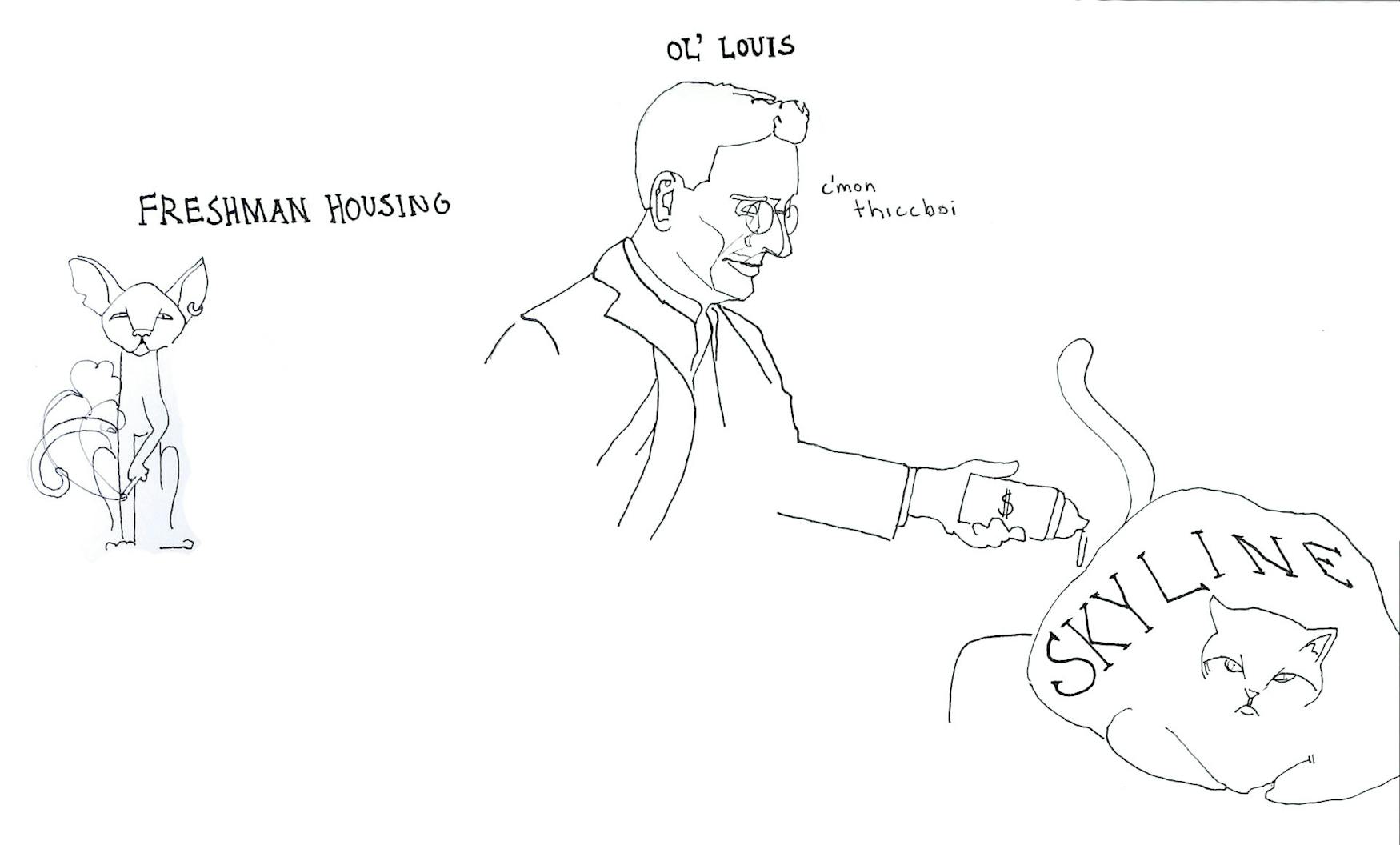Skyline construction highlights missed opportunities
The University is evidently proud of Skyline, the new, environmentally-friendly replacement for Usen Castle. The Castle was no longer suitable for student living, and this Board supports the construction of additional on-campus housing. Unfortunately, the layout and cost of Skyline raise concerns about the University’s decision-making during the construction process, and this Board cannot fully support the final product.
For a building of its size, Skyline simply doesn’t add enough beds to a campus that desperately needs the additional housing. Skyline only holds 164 beds, split across 52 singles and 56 doubles. The large number of singles is particularly unfortunate, especially given their size — they range from 120 to 140 square feet, which is larger than many other singles and is unnecessary for most students. Building more doubles instead of singles and reducing their size to a more realistic amount would have been an easy way to fit in additional beds. In a March 2017 Justice article, Vice President for Campus Operations Jim Gray explained that Skyline adds approximately 60 more beds than did the previous residence hall. In light of Skyline’s $38 million price tag, we are disappointed by the meager increase in living space.
Similarly, Skyline is full of unassigned space that could have easily been designated as additional housing. The dorm is full of lounges and meeting spaces that, while potentially useful on occasion, will likely see little daily use. Most inexplicable is the 100-person multipurpose room which does not fulfill an obvious campus need. Though many of Brandeis’ newer dorms, such as the Village and Ridgewood, have plenty of open space, Skyline’s prioritization of additional meeting spaces over living areas is perplexing and inefficient.
Skyline’s price tag is also exorbitant. Put simply, 164 beds should not cost $38 million. This Board commends the University’s decision to install geothermal vents and solar panels into Skyline and understands that significant up-front investment is required for these alternate energy options. However, even in light of these expenses, the building should not have cost as much as it did. Per a May 2014 report from College Planning & Management Magazine, the median cost for a 182-student dorm is about $14.4 million, or about $82,000 per student. Even in the Northeast, where construction costs are higher, the median dorm costs around $116,000 per student. Skyline, however, cost around $232,000 per student. Even accounting for rising building costs since the report’s 2014 publication, Skyline’s per-student cost is over the top. Had the University spent a more reasonable sum on its new dorm, it could have added extra housing while also improving existing residential spaces. The following is a list of housing improvements the University should have addressed with the money it spent on Skyline, and should seek to implement in the future.
- Improving the accessibility of existing dorms. Skyline’s larger rooms and elevators help house students who need accommodations, but that also could have been accomplished by modernizing existing dorms. Massell Quad, North Quad, East Quad, Rosenthal Quad and the Charles River Apartments are all inaccessible to students unable to climb stairs. Though students are given alternate housing options, lack of accessibility inhibits students’ ability to participate fully in Brandeis’ social life and student clubs.
- Increasing the size of existing dorms. Most Brandeis dormitories do not exceed three or four floors. Instead of spending money on Skyline, the University could have added new floors to these dorms, thus increasing housing in a more cost-effective manner. Ridgewood, which already has elevators, could be expanded without constructing an additional elevator.
- Improving first-year housing. In their first year of college, students are placed in dorm rooms with worn-out furniture and crumbling paint. They are woken up by loud heaters in the winter and swelter in the warmer months. By spending its money on modernizing first-year dorms, the University should have fixed first-year dorms to improve the student experience for a significantly larger number of undergraduates.
- Creating a laundry stipend. At Brandeis, students pay for laundry through WhoCash — in other words, real money. At many other universities, tuition and housing costs include a stipend for laundry; this allows students to wash clothing without reflecting on the opportunity cost of every load.
- Installing more (and more reliable) laundry machines. Not only is laundry expensive, but machines often fail to dry clothing fully, causing students to pay twice for the same service. Moreover, many quads, such as the Foster Mods or Charles River Apartments, simply do not have enough washing machines per resident. Adding a few more working machines in each residence quad would solve both issues. Furthermore, the University should install laundry rooms in Gordon and Scheffres Halls. At present, students living in those halls must use laundry rooms in Cable or Reitman, which is inefficient and problematic during days with poor weather conditions.
- Building additional kitchens in East Quad, as there is currently only one kitchen available for the up-to-373 students that live there. Since there is only enough space for five people to occupy the space at one time, students have to trek to Polaris lounge or Skyline to prepare a meal.
- Adding air conditioning units to the Charles River Apartments, Foster Mods, East Quad, North Quad, Massell Quad and Rosenthal Quad. This could be done over the summer, when students do not occupy most of these residence halls. During the beginning of the Fall semester, end of Spring semester and especially over the summer, the heat can become unbearable. This forces students to either bring in numerous fans, which consume additional electricity, or outside air conditioners, which pose fire hazards.




Please note All comments are eligible for publication in The Justice.